
Following my post about how the planning documentation for the Ledard farm campsite has been altered (see here), I have been trying to obtain final confirmation from the Loch Lomond and Trossachs National Park Authority of the status of the new track being used to construct the Hydro Scheme (see here). On 28th September a member of staff told me:
“I can confirm that the temporary track which has been constructed does not have planning permission. The route of the track follows the route of the approved penstock and has been subject to monitoring as part of the approved hydro scheme ref 2013/0267/DET. The agent was advised that planning permission was required for the track and this has led to the submission of the planning application which is currently being considered.”
However the day before, when I visited the site with a friend, it was claimed (see below) that planning permission for a temporary track had been consented by means of a Non-Material Variation to the original application. I therefore asked the LLTNPA three weeks ago for a final clarification but have not had a response. I therefore need to qualify what I say here but it appears that Fergus Wood, who until every recently was an LLTNPA Board Member and Member of the Planning Committee, has allowed a track to be constructed without planning permission on his land. This post will develop the argument that unless the LLTNPA refuses the retrospective planning application that has been submitted for this track (see here), the credibility of the entire planning system in the National Park will be in shreds, and that to enforce the planning conditions will benefit the local economy.
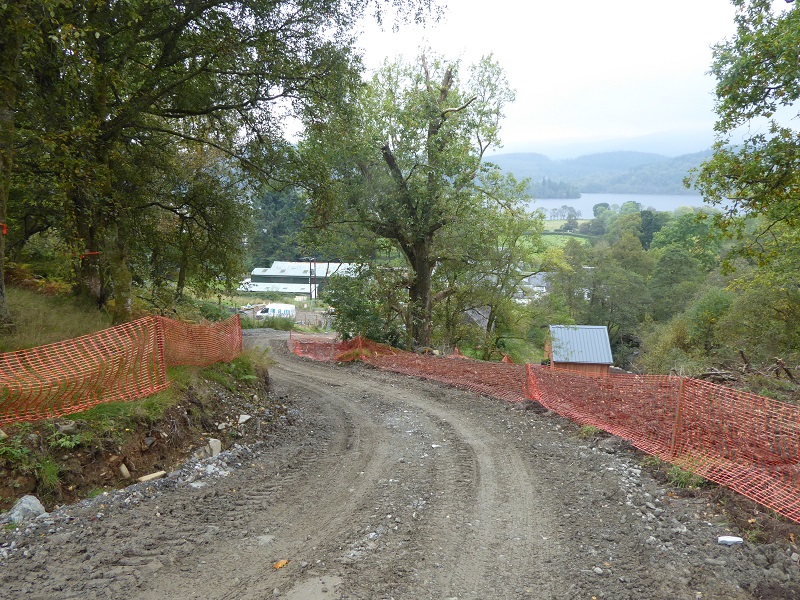
The first section of track above Ledard Farm was already in existence but has been broadened and the creation of a pipeline through the trees has made the section of new track above more visible (see top photo).
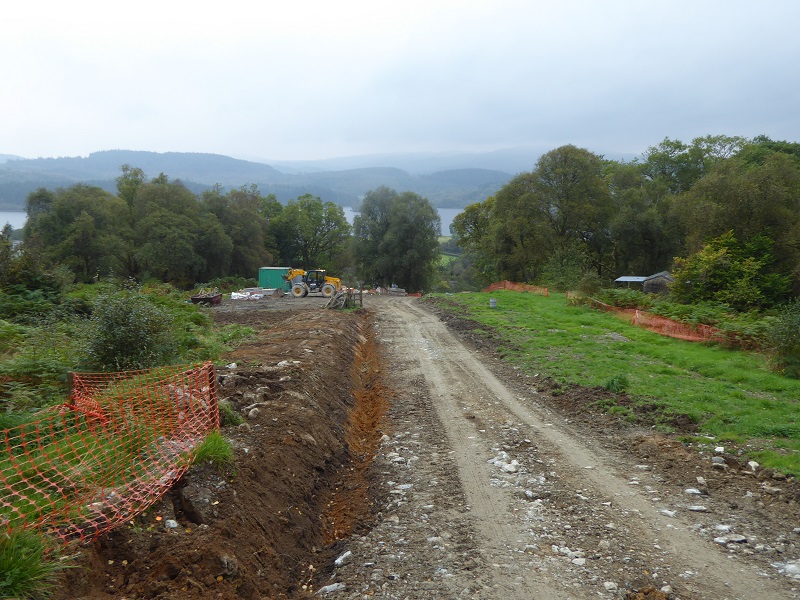
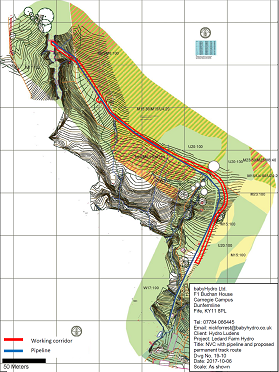
A document uploaded to the planning portal in October after our visit described this as a “working corridor” (see left). The photo above shows that this is not true. A track has been constructed. At the time of our visit there had been recent work both to landscape it (the mound of earth on the left) and to created a drainage ditch.
This section of track is not only highly visible it is also quite steep and appears to exceed the maximum angle recommended by SNH in the Good Practice Guidance on Hill Tracks – 14 degrees. Another reason, no doubt, why staff would have originally advised that there should be no access track constructed on the east side of the Ledard burn.
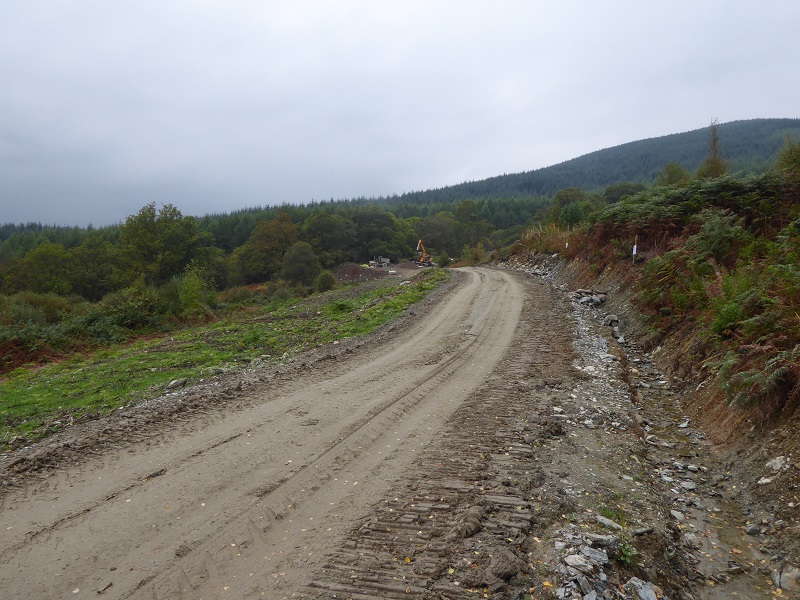
Above the steep section the track turns west and takes a more or less horizontal line across the open hillside. It was the visibility of this section of track from afar which informed the advice staff gave to Fergus Wood, prior to the original application, that the access track should be on the far side of the Ledard burn (through the trees beyond the digger). The reasoning behind this advice was repeated in the report to the LLTNPA Planning Committee which approved the original application. Fergus Wood, who is still the landowner, has nevertheless allowed the developers to construct a new access track on this section of ground. If Board Members can ignore planning conditions and requirements, I am afraid the message is so can everyone else. This is why the LLTNPA should have taken enforcement action as soon as they heard about this and should now refuse the new planning application.
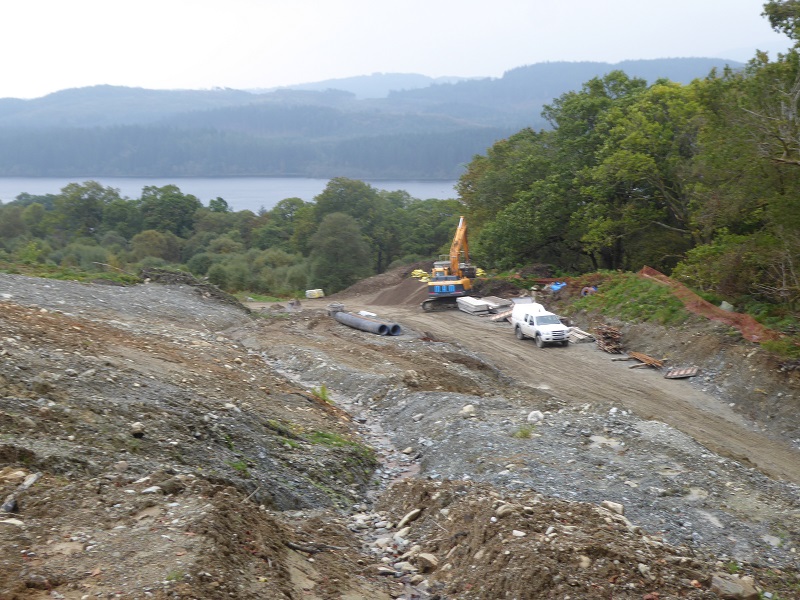
Its not just that a track has been created, a large section of hillside above has been altered – another concern in the original committee report – and various soil types mixed. The LLTNPA had agreed to some work here – necessary to construct the pipeline – but a much wider section of land than that set out in the original working corridor appears to have been affected. The LLTNPA should be requiring a full report on the works that have been carried out, including their ecological impact. The planning application to retain the track says this section of hillside will be planted with trees.
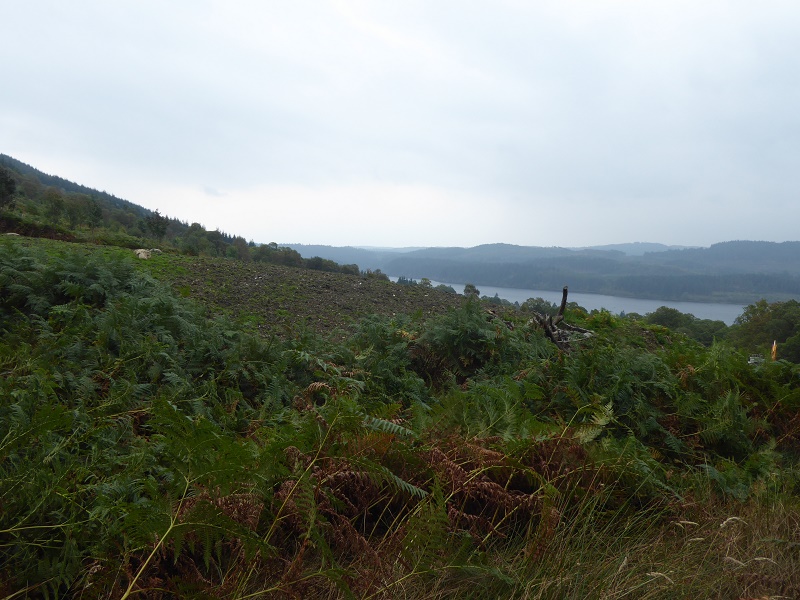
Another photo showing works appear to have been carried out outwith the working corridor approved by the National Park Authority. We wondered if turf had been “robbed” from here in order to restore the land above the pipeline? (The work on the ground in this photo is unlikely to have any significant landscape or ecological impact but the point is its being carried out on a Board Member’s land apparently outwith planning consents).
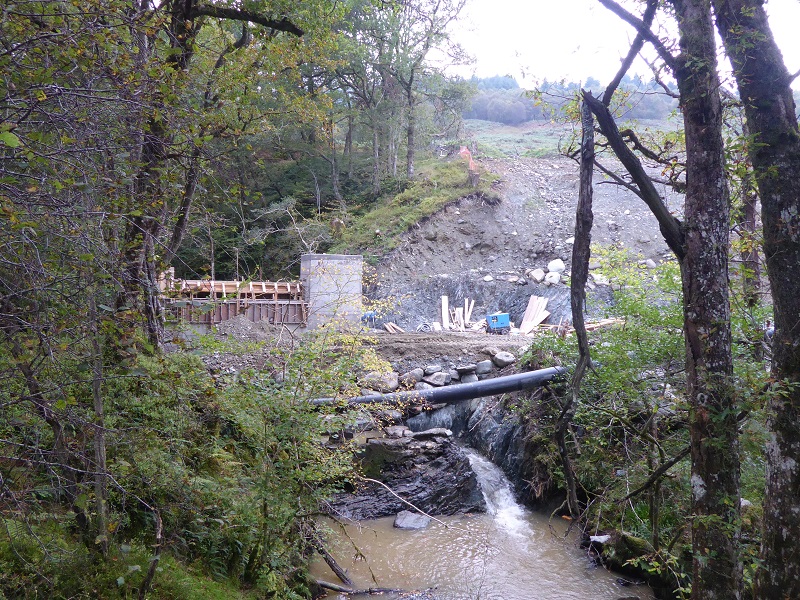
The intake to the hydro scheme is well hidden and will have almost no impact in landscape terms – the creation of a hydro scheme on Ledard Farm is not the issue. The question for the LLTNPA though is how much of the excavation of the hillside on the right was agreed as part of the pipeline work and how much due to the creation of the construction track (e.g as a “borrow pit” from which to obtain materials to created the track)?
 Incidentally, its worth noting how the muddy water in the burn below the intake, a contrast to the water above (see left) which was totally clear. This is why detailed plans about how sediment will be prevented from entering river systems are required as part of planning consents. I don’t have the expertise to know whether the amount of sediment entering the river in this case is within agreed limits or not but SEPA have been notified.
Incidentally, its worth noting how the muddy water in the burn below the intake, a contrast to the water above (see left) which was totally clear. This is why detailed plans about how sediment will be prevented from entering river systems are required as part of planning consents. I don’t have the expertise to know whether the amount of sediment entering the river in this case is within agreed limits or not but SEPA have been notified.
Could the track have been granted planning permission?
On returning down the Ben Venue track we were met by Fergus Wood and a group of people working on the site (who appear to included staff from Vento Ludens, Baby Hydro and the contractors MAM). It quickly became apparent that most of the workforce, who were friendly, did not really know what was going on and the main discussion was between my friend, myself, Fergus Wood and another person who did not introduce himself but appeared to represent Vento Ludens. He confirmed that Vento Ludens had bought the scheme from Fergus Wood, something I had not been certain of up till then and had obviously read the articles on parkswatch because he claimed a permanent access track was needed to allow future maintenance to the site.
The only reason I can repeat what was said next is that I had taken the precaution of switching my voice recorder on before starting our walk round the site and can produce this in Court if the man who appeared to speak for Vento Ludens wanted to challenge the veracity of what I have to say next (we were potentially two witnesses against six). This person claimed to me that a temporary construction track (as in the photos above) had been agreed by the LLTNPA by means of a Non-Material Variation (NMV) to the original planning application. I replied that I had looked carefully at the planning portal and as far as I could recall the NMVs that appeared there did not include a temporary construction track. However, accepting I could have missed something or the Park might have failed to publish the consent, I requested that he could send me the NMV consent and I would be happy to publish with a correction on parkswatch. When he repeated the claim, another guy, who wanted to be helpful, asked for my email – I said it was on parkswatch – so he could send the NMV to me. He obviously believed an NMV had been submitted and granted consent. I have never received it and, having checked the planning portal again there is no such consent there. This is why I have also asked the LLTNPA to confirm that when they say the access track never had planning permission, that includes any temporary construction track agreed by means of a NMV.
Once I have final confirmation of the planning position, I will comment further about the implications of this case for the Board Members Code of Conduct. Meantime, I think there are some lessons here for the planning system.
Implications for the planning system
What struck me from the discussion on Ledard Farm is the workforce appear to have very little awareness of what has and what has not been agreed through the planning system. The guy who said he would send me the NMV obviously believed such a variation had been agreed but it appears he had never seen the document. It appears he trusted that someone had made the application. This made me realise that people working for contractors on the ground on this or other hydro schemes often may have little idea about whether the necessary planning consents are in place, let alone what they require. This is not their fault, they just do as they are told but this may help to explain why planning conditions are often not met, whether at Ledard, other hydro schemes, the Beauly Denny restoration etc.
What then happens is driven by money. If developers and owners of hydro schemes also know the National Park is reluctant to take enforcement action, the temptation to take shortcuts to increase profit levels increases. The man who claimed an NMV had been obtained for a temporary construction track at Ledard, also claimed that that “due diligence” had been carried out before the purchase of the hydro scheme. Now, one might have thought, if an access track is essential for maintenance purposes as he claimed, due diligence would have included checks on whether consents were in place for access to the site both for construction and maintainance purposes. Perhaps checks were undertaken, but if so someone appears to have concluded that the absence of consents for an access track would not impact on the value of the hydro scheme. What does this tell you about the respect given to the planning system in the National Park?
The basic problem is that while many of the conditions the LLTNPA has applied to planning consents for hydro schemes are excellent, they are not enforced. As a consequence they become meaningless as soon as a developer puts money before the natural environment or their own interests before the planning system. While part of the solution to this is enforcement – which is why it is so essential the LLTNPA is seen to act robustly in this case involving (now former) Board Member Fergus Wood – the other part of the solution is to have an informed workforce. Where developments are carried out according to planning requirements and shortcuts are not taken, that should create MORE work. More work would give more pay to the people working on these schemes and put more money back into the local economy. Its in the interests of the workforce therefore to understand exactly what planning conditions are in place and to empower them to speak out when these are broken. The LLTNPA could be encouraging this. It could ask all developers to confirm that every member of the workforce has seen the relevant plans that have been approved and could set up a confidential reporting line for use where they have been broken. That would also help other people report potential breaches of planning permission (its hard to clype on your neighbours).
What’s good for the environment is good for local jobs
Vento Ludens (“Playing with the Wind”) – the company appear to have started out in windfarms before branching out into hydro – is a Company with their address registered in Scotland at South Charlotte St in Edinburgh. It is ultimately owned by a company registered in Germany which is controlled by H.Walz (who is also Director of Vento Ludens). Its latest accounts vento ludens accounts, for the year ending December 2016, show shareholders funds of £3,938,194.
This is important because developers in general are always complaining about the unnecessary costs imposed by the planning system. Renewable energy developments, however, are are highly profitable, hence the investment from Germany in this case but also why many of our hydro schemes are now ultimately owned by the City of London or other tax havens. Vento Ludens’ accounts show they have plenty of money that could be used to pay now for the re-instatement of the access track, which would provide more employment to the people working on the scheme. They are also likely, once the scheme becomes operational, to make enough money to pay for the Ledard hydro intake to be maintained without an access track. That would also help local employment (the time taken to walk up to the hydro instead of driving there to clear the screens of debris). If larger scale replacements – once every ten years? – could not be brought in by vehicle off-road, helicopters could be sued. The LLTNPA therefore have no reason to fear that by enforcing planning conditions that would somehow harm the local economy.
The lesson from this I would suggest is that the best way the Park could help the local economy, is by ensuring the highest standards possible are applied to hydro schemes. This would help reduce the amount of money taken out of the local area, Scotland and indeed the UK.
Even better would be if it could promote more community owned Hydro Schemes. One wonders if Fergus Wood ever thought about trying to sell the Ledard hydro scheme to the local community in Strathard rather than to a company controlled from abroad and what sort of system might have helped him do this.
The Ledard Hydro track planning application is still open for comment and you can do so here
Addendum
At 13.20 today, 3 hours after this post appeared, I received an email from the LLTNPA which stated “that the change to a new track has not been considered as a Non-Material Variation”. In other words a track that has been constructed on land owned by Fergus Wood when he was a Board Member and a member of the Park Planning Committee is unlawful. This is a scandal which needs full public investigation. I have removed the ? after “unlawful” in the original title of this piece and many of the other qualifications to what I wrote no longer apply.
